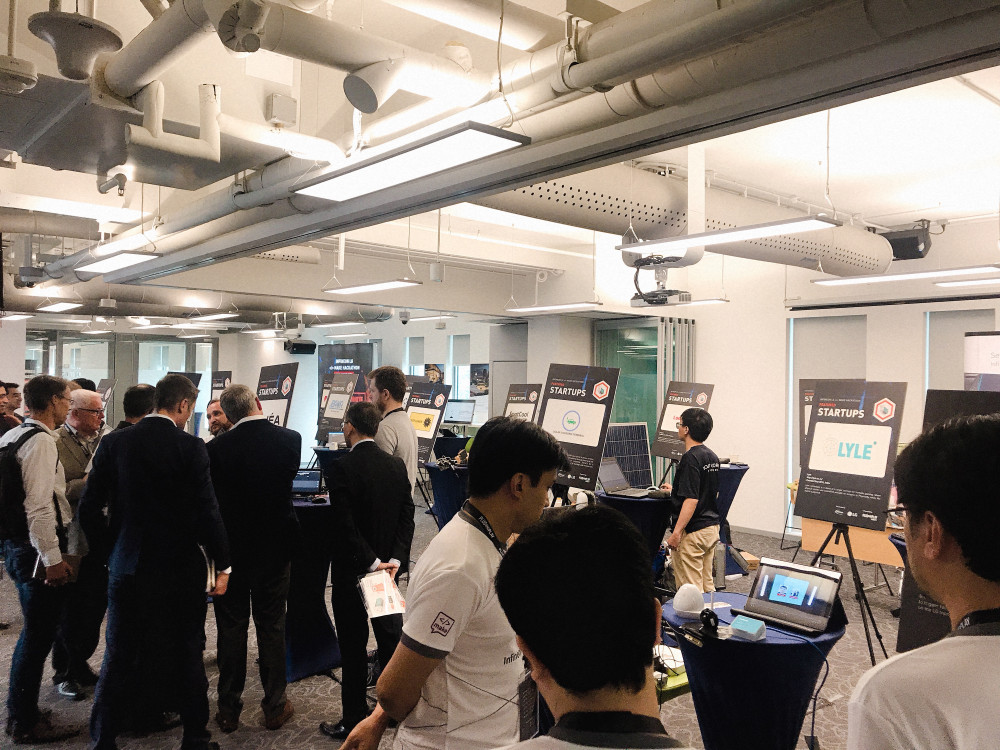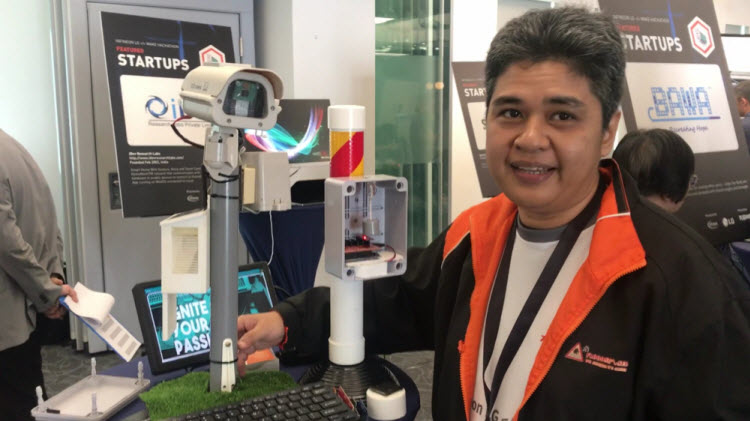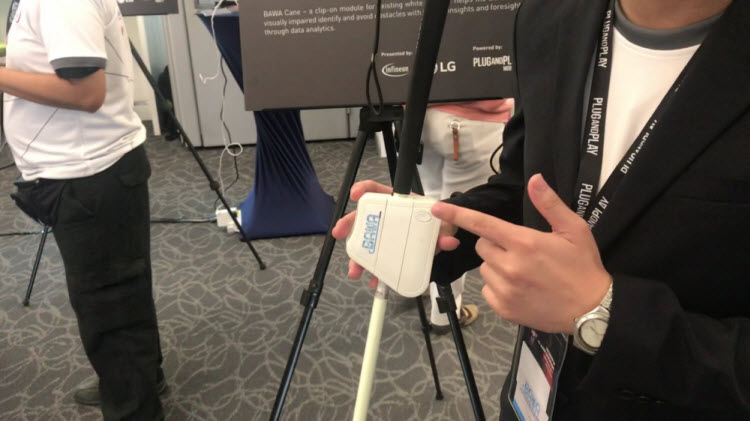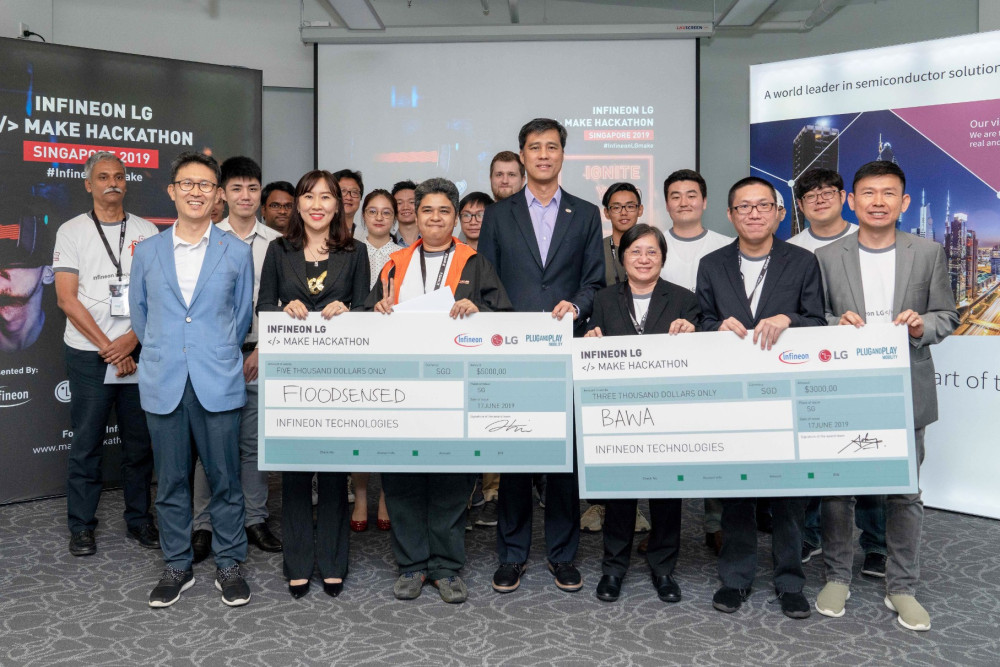Behind Infineon LG </> Make Hackathon
August 01, 2019
Author: Jungyong Ko
Infineon Technologies, who has long been a valued partner to LG Electronics in semiconductor for consumer electronics, one day offered to host a joint hackathon and invite the startups in nearby countries. The intention was this: by participating in the hackathon, the startups get to experience Infineon’s hardware and LG’s software platform and have opportunities for possible partnership and media exposure; and by holding the event, both companies get to expand the ecosystem and community which is crucial when it comes to innovation, something very difficult to achieve on one’s own. Rather than having them stay overnight and finish their work in a day which is usually the case for a hackathon, we planned to give them a few months of preparation time to develop working demos. After reviewing what we can offer to developers and what might be interesting enough for them to participate, we decided that the theme for the hackathon should be ‘the future of IoT’.
We decided to do it in Singapore, an innovation hub in Asia, (and a lovely tourist spot) and hired a global accelerator company called Plug and Play. Luckily they had a pool of 3,000 startups in countries ranging from Asia to Europe. Also we took two trips to the top universities in Singapore so we can invite students as well. Two months before the event day, we had the final list of 11 startup companies and seven student teams. The technologies that they were working on were much diversified. Some were working on technology for identification during the immigration process when someone arrives at the airport, some were working on drones, and others on child safety in a car, and so on. Both the number of participants and the diversity of project themes exceeded what we anticipated in the beginning. A good sign for a successful event.
Infineon provided hardware, like Wi-Fi modules, and sensors for monitoring temperature or pressure while LG offered the software platform webOS, a Raspberry Pi, and a display. Since most of the developers were not familiar with webOS, we offered them webinars and technical supports through Slack, a texting app tailored to use in workspace. To make things even friendlier to newcomers, we limited the scope of projects to development of web apps so they don’t have to waste time understanding what’s underneath and instead can kick-start their project simply by looking at the examples and reading documentations. When the development phase started in May, a month before the event day, questions started flowing in through Slack, another good sign.
As we were rushing towards the event day, a few teams dropped out due to their schedule, but luckily a total of 15 teams managed to stay. The day before the event day, Infineon set up the event in their office in Singapore and the teams arrived along with the journalists from Germany. CEO of Infineon, Dr. Ploss, President of Infineon APAC CS Chua, and Vice President from LG Electronics Helen Choi gave an opening speech to start the hackathon. The teams pitched their ideas to the judges who were experienced engineers from Infineon and LG. Real working demos were presented. The place was full of ideas and excitement.

Demos from teams
The judges selected the first-prize and second-prize winners and they were given 5,000 and 3,000 Singapore Dollars. The winners were Floodsensed and BAWA and they were selected based on 17 criteria such as difficulties of problems, potential benefits, degree of innovation, and good use of Infineon hardware and LG webOS.

First prize winner - Floodsensed

Second prize winner - BAWA
All other teams’ ideas were brilliant, although not everyone was given prizes. One noticeable team was Safety In Motion (or S.I.M.). They were students from China and their app was about a safety monitoring system for children in rear seats. What is interesting about them is that they went further than what was offered. They studied Enact, which is a UI framework for webOS, on their own and applied it to their design. Although Enact is an open source project and available to anyone, we never had a chance to give them a webinar or any technical support for it but they used it anyway and managed to develop a cool UI. It was amazing to hear what they have done with Enact.
The event went very smoothly without unexpected problems and the food was great. The teams were very enthusiastic about technology. Everyone seemed to be enjoying the event. The journalists interviewed the teams and the news were out globally right after the winners were announced. Medias in Singapore as well as in Europe, Korea, and other countries in Asia posted about the hackathon. It was such a rewarding experience.

Group photo
Although planning for an event is important, what is equally important is the follow-up actions after the event. It would be meaningless if this is to be just about the hackathon. To make them stay in the community, we must offer them incentives, whether it be technology, partnership, or opportunities. The first-prize winner, Floodsensed, has plans to expand their apps to LG’s other display products by taking advantage of the cross-platform characteristics of a web app that webOS supports. In doing so, they will be given technical support and partnership with LG’s other division. We wish to do the same for every team and expand the webOS community.